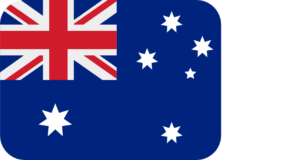There was rising uncertainty around the potential impact of tariffs, Trump’s deregulation agenda, fiscal policy and immigration. Markets were concerned with uncertainty about trade policy.
Markets were increasingly worried about the impact of Trump’s policy agenda. Equity markets were generally weaker. The focus was on what could happen because of potential tariffs. It was unclear what the outcome could be on the target countries or the full measure of the tariff regime. The MSCI World (hedged into AUD) returned -5%.

USA
The S&P 500 underperformed Developed Market equities through March (-5.6%). There are consequences, not just to other countries, but also for American companies and consumers which include higher prices, more The US Federal Reserve elected to hold rates steady at 4.5% at their March meeting. They highlighted that uncertainty around the economic outlook had increased and they marginally lowered its expectation for economic growth for the year.

Europe
European equities generally outperformed the US market for the second consecutive month, including returns for major European indices (UK, Germany, France). The European Central Bank elected to reduce key interest rates by 25 basis points at their March meeting. This reflected the progress bringing inflation back to target..

Asia
There was a wide spread of market returns. Chinese equities delivered a 2% return (in local currency). Taiwanese equities were weaker (-10.4%). Concerns in relation to semiconductor maker TSMC were the key driver, with the potential impact of tariffs weighing on investor sentiment.

Australia
Australian equities returned -3.3%. This was an outperformance of Global Developed Markets on a relative basis. All sectors delivered negative returns, except Utilities which returned 1.5%. The Information Technology sector was the worst performing sector (-9.1%). Australian Gross Domestic Product data (to December) was released, showing that GDP growth had improved over the quarter and the ‘per capita recession’ had ended.

Currency and bonds
Australian bonds returned 0.2% and Overseas bonds returned -0.4%. There were also small shifts in the yields on Australian and US 10 year bonds despite some intramonth volatility. US yields have fallen more materially over the previous quarter however. That is likely due to the uncertainty about the US economic outlook.
Australian dollar performance relative to the USD was soft over the month, returning 0.2%. Other major currencies (particularly the Euro) were also stronger relative to the USD. The Australian dollar was weaker against most major trading partners.

